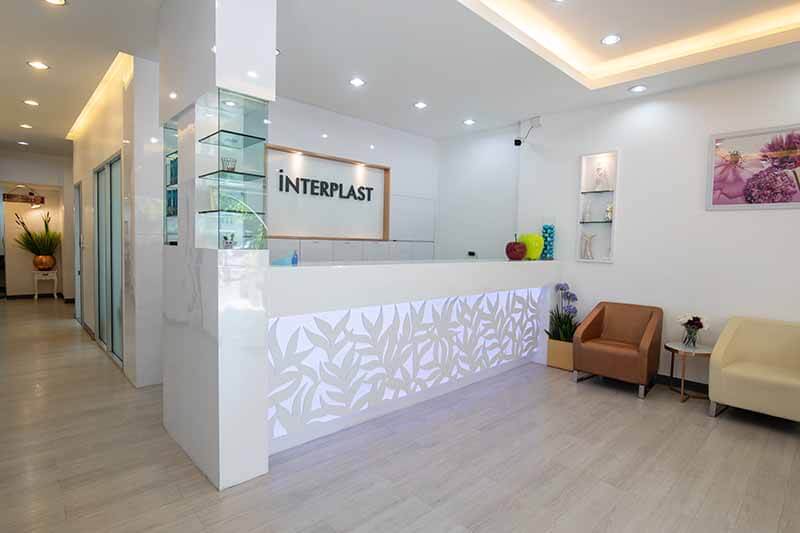How to Get Rid of Turkey Neck: What Are Your Options?
“Turkey neck” refers to the saggy or wrinkled skin around the neck that develops due to the normal aging process. Also called submental skin laxity, the characteristic feature is the skin’s looseness and crepey appearance.
The underlying soft tissues and neck muscles also become laxer, reducing the support. As a result, the cervicomental angle – formed where your jaw meets your neck – ends up becoming less defined.
Table of Contents

Causes of Turkey Neck
Let’s take a closer look at the factors:
- Aging:
As you age, your skin naturally loses elasticity. Gravity causes the skin on your cheeks to sag, leading to the pooling of skin beneath your jawline and neck. - Weight:
Weight gain can lead to the accumulation of extra fat around your neck. - Genetics:
Inherited bone structure or anatomy can affect whether you carry extra neck tissue or are prone to excess fat around your neck. Many people notice similarities with their parents’ neck or jawline. - Lifestyle factors:
Environmental toxins, smoking, sun damage, and a poor diet can all impact your skin’s elasticity. - Medications:
Certain medications can cause overall weight gain or localized fat accumulation, including around the neck. For example, some anti-HIV medications cause fat to collect in the neck and other areas, a condition known as HIV lipodystrophy. Steroid medications can also make your face rounder and increase neck fat. - Weak neck muscles:
The two platysma muscles on the front of your neck can weaken or separate over time, affecting the appearance of your neck.
How to Get Rid of Turkey Neck
Solving the problem of turkey neck isn’t simple – you can’t just roll back the clock. Some people will benefit tremendously from weight loss, reducing the loose skin. That’s especially true in younger people with healthy skin. However, if you smoke or you’re older, your skin has lost much of its elasticity. As such, losing weight isn’t sufficient.
Two viable treatments can significantly reduce the appearance of turkey neck: Kybella® injections and turkey neck surgery.

Kybella® Injections – A Minimally Invasive Option
Deoxycholic acid, or Kybella® injections, can reportedly break down and absorb dietary fat. When injected into the fat beneath the chin, this naturally occurring molecule destroys fat cells, resulting in a noticeable reduction of fullness and a more contoured neck profile.
Unlike other options, it’s minimally invasive, involving multiple small injections directly into the neck area. Sessions usually last around 15 to 20 minutes and are spaced about a month apart to achieve optimal results.
Because the procedure only involves small injections, the recovery time is quick. Common side effects include swelling, bruising, and numbers – expect these effects to subside within a few days,
Neck Lift Surgery
A neck lift (Platysmaplasty):
Addresses sagging neck skin and muscles by tightening the platysma and removing excess skin, with incisions behind the ears and under the chin; recovery lasts a few weeks for a smoother neck contour.
Neck lift surgery works by removing the excess fat and skin around the neck region. The result is a tighter, smoother, and more countered neck. For a rejuvenated appearance around the neck area, the neck lift is the gold standard of surgical intervention.
Patients who have undergone neck lift surgery often report high satisfaction with the results, enjoying a more youthful and defined neck profile. The procedure can significantly enhance self-confidence and overall appearance. Most patients can return to their normal activities within a few weeks, and the benefits of the surgery are long-lasting, providing a refreshed look that can make you feel years younger.
Kybella® vs. Neck Lift Surgery
Now that we’ve covered the two main options for addressing turkey neck, you may be wondering which option is most suitable for you. While Kybella® is less invasive, the results are almost certainly less dramatic compared to those of turkey neck surgery.
As a general rule, Kybella is best suited to individuals with moderate submental fat and good skin elasticity. In contrast, surgery is the more comprehensive option and is advisable for people with significant skin laxity, muscle banding, and excess fat.
Here’s a comprehensive comparison:
Kybella | Neck Lift | |
|---|---|---|
Recovery Time | Minimal downtime, swelling and bruising for 1-2 weeks | Longer recovery time, typically 2-4 weeks |
Effectiveness | Effective for mild to moderate fat under the chin | Very effective for moderate to severe sagging skin and fat |
Results Timeline | Gradual improvement over 4-6 weeks per treatment; multiple sessions needed | Immediate improvement, with final results visible, after the swelling subsides |
Longevity of Results | Long-lasting, especially with stable weight | Long-lasting, often 10-15 years, especially with stable weight |
Scarring | No scarring | Minimal scarring, usually hidden behind ears |
Cost | Typically less expensive per session, but can add up with multiple treatments | Higher upfront cost, but potentially more cost-effective long-term |
Pain and Discomfort | Mild to moderate discomfort during and after injections | More significant discomfort, pain managed with medications post-surgery |
Side Effects | Swelling, bruising, numbness, hardening of the treated area | Swelling, bruising, tightness, numbness, risk of surgical complications |

Get Evaluated by an Expert Plastic Surgeon
Ultimately, deciding between these two options requires an expert opinion. They can help inspect the area, determine the severity of your turkey neck and explain the two procedures in depth.
Schedule a consultation with an experienced plastic surgeon at Interplast Clinic in Bangkok. We’ll support your decision and show you how to get rid of your turkey neck. Take the first step towards a more rejuvenated appearance today.














